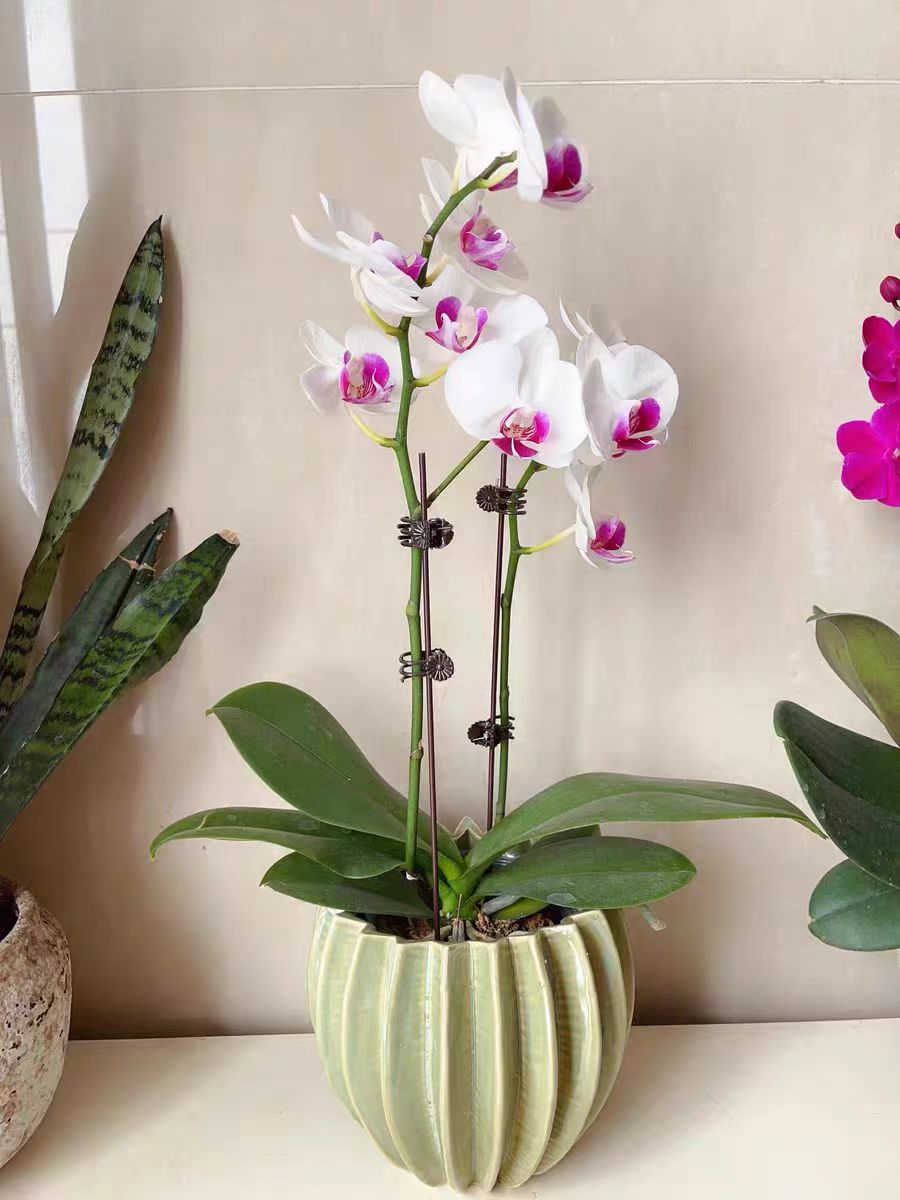Phalaenopsis is a popular choice in the flower market. Many flower lovers have found that there are post - flowering seedlings of Phalaenopsis with relatively low prices in the market. So, can these post - flowering seedlings be bought? Will they bloom again in the future? And how to determine whether they are post - flowering seedlings?
From the perspective of price and potential, post - flowering seedlings are worth buying. As the flowers of post - flowering seedlings have withered and their ornamental value has decreased, their selling price is often much lower than that of Phalaenopsis with flowers, which is very friendly to flower lovers with limited budgets. Moreover, as long as they are properly maintained, post - flowering seedlings have the ability to bloom again. The Phalaenopsis plant itself stores a certain amount of nutrients. Through subsequent careful cultivation, it can completely regain energy, breed new flower spikes, and bloom beautiful flowers.
However, there are also certain risks in buying post - flowering seedlings. Since the flowers have withered, it is impossible to intuitively judge the previous flowering state and health of the plant. Some post - flowering seedlings may have problems such as damaged roots and latent diseases and insect pests. If not handled properly, they will not only be difficult to rebloom but may also lead to the death of the plant.
To know whether a Phalaenopsis is a post - flowering seedling, it can be judged from the following aspects. First, observe the flower stem. The flower stem of a post - flowering seedling usually has obvious signs of withering and yellowing. The flowers at the top have withered, leaving only a bare stem. Some flower stems may even have been pruned, leaving a short residual stem.
While for a normal Phalaenopsis that has not bloomed, the flower stem is generally green, full in texture. There may be flower buds at the top, or the flower stem has just been 抽出 (pulled out), in a growing state. Second, check the leaves. As post - flowering seedlings consume a lot of nutrients when blooming, the leaves may turn yellow, become thin and soft, and some leaves may have wrinkles.
The leaves of a healthy Phalaenopsis that has not bloomed are thick, glossy, bright green and uniform in color, without obvious spots and damage. In addition, checking the roots is also crucial. If the post - flowering seedlings are not properly maintained, the roots may become dry and rotten. The roots of normal non - blooming Phalaenopsis are mostly white or light green, full and tough, and the root tips are transparent and full of vitality.
After buying post - flowering seedlings, if you want them to bloom again, they need scientific maintenance. Timely prune the residual flowers and stems to reduce nutrient consumption; provide a suitable growth environment, keep the temperature at 15 - 28℃, and give scattered light; water reasonably, keep the planting material slightly wet, and avoid water accumulation; fertilize regularly, you can choose special orchid fertilizer, apply thin fertilizer frequently to help the plant recover and accumulate nutrients.
In general, post - flowering seedlings of Phalaenopsis can be bought and they may bloom again. As long as you master the method of distinguishing post - flowering seedlings, select healthy plants, and do a good job in maintenance management, the post - flowering seedlings can bloom again.
Can post - flowering seedlings of Phalaenopsis be bought and will they bloom?

Share with
Tagged in :




Leave a Reply